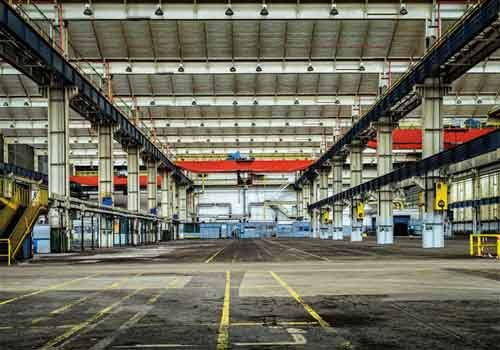Work-related injuries are considered to be among the most dangerous effects of warehouse management or large portable buildings practices that are lacking. In 2016, for every 100 full-time workers, there were 5 workplace injuries according to the US Department of Labor. Day to day processes involving shipping, inventory, security, returns and shipping all fall in the hands of warehouse managers in addition to workforce safety processes.
Main Advantages Of WMS Software
The advantages of WMS to a specific company are dependent on its size, industry of operation and individual needs. Here’s a list of ten of the main benefits of WMS solutions nevertheless.
-
Lower Operating Expenses
You can achieve lower operating expenses in a number of ways using a well-structured warehouse management system. The system helps to minimize wastage, the utilization of space and labor work.
To create a more efficiently flowing warehouse, the software can assist you to identify the most suitable storage locations for specific machinery, inventory, and materials.
To make it possible for users to come up with possible virtual floor plans, some sophisticated systems come with simulators for warehouse floors. Anything that you would like to house in your warehouses, such as machinery, shelves, and pallets, can be placed with the help of these simulators.
To facilitate the flexibility with which warehouse managers would like to manage their storage space, WMS are also popularly used to support Last In First Out and First In First Out approaches. Items with the shortest shelf life are chosen first in the FIFO approach.
To maximize the amount of available space, on the other hand, LIFO allows for the placement of shelves along walls. Where possible, users can save time and money because they can set up their warehouse to achieve the highest level of efficiency thanks to this flexibility.
-
Improved Visibility Of Stored Inventory
One of the essential elements of WMS is inventory visibility. By making use of RFID tagging, serial number and barcode technology, warehouse management system software offers synchronized inventory data.
The entry into the warehouse, movement on the warehouse floor and transfer from one point to the next of each item in the warehouse can be accurately recorded using these methods.
By clearly showing the most popular products among clients at different periods during the year, this sort of visibility is important when forecasting demand. When the business leadership wants to find out which products are losing their appeal in the market, and which ones to invest in, these demand projections come in handy.
In case there is a need to recall some items, improved inventory tracking capabilities, an important benefit of WMS, is also invaluable. To find out whether an item came from the batch in question, users can use serial numbers to trace it back to its initial lot ID. Instead of being forced to recover all or randomly selected goods suspected to be damaged, this traceability helps you pick out only those that are problematic.

-
JIT Inventory Management
WMS helps warehouse managers with the adoption of the Just-in-Time inventory management approach. In this approach, inventory moves through the warehouse swiftly as stock levels are kept low.
Inventory is received just in time of order instead of having it stored in the warehouse for extended periods. With the right WMS software, managing an efficient JIT inventory is easy and straightforward even though the method is considered to be quite complicated.
Demand projections need to be accurate to support an effective JIT inventory system. To ensure that demand is met without any over or understatements, warehouse management system software generates estimates that can be used to set accurate corresponding stock levels.
Safety stock and any associated costs are minimized as a result. Any wastage related to items with a short shelf-life can be decreased in the case of raw materials intended to be used in manufacturing processes.
Find here : Computer Monitoring Software to Monitor Employees Productivity
-
Consistent Upgrades
Continuous updates are among the main advantages of WMS. To keep up with the latest trends in the industry, WMS software providers are always adding new features to their solutions.
Organizations are therefore able to fine tune their processes under the guidance of these upgrades and with it, keep up with the most current trends.
Continued improvement becomes simpler with cloud-based warehouse management system solutions. The need to hire permanent IT specialists is minimized as new features and the latest upgrades to the system can be made routinely.
However, depending on the details of their agreement, businesses that operate an on-site system may be provided with updates, or not. Many users are choosing to switch to cloud-based solutions due to this reason.
-
Added Security Features
When originating transactions, on most WMS solutions, workers are required to use unique user accounts.
To avoid a variety of problems, reduce pilferage and improve accountability, an audit trail linking specific workers to specific transactions is created. Methods of improving workforce practices and opportunities for training can be identified as a result as well.
Access to various analyses and reports is restricted through the user-based access system. Workers can only see what pertains to their work, and nothing else. You no longer have to be worried about losing your competitive advantage or confidential company information.
-
Optimizing Outbound And Inbound Items
WMS software users can increase the efficiency through which stock is moved within the warehouse similar to how they create efficient floor plans. Inbound preparation tools like putaway and scheduling management tools, are conveniently accessible as soon as you are scheduled to receive stock items, thanks to WMS software.
Depending on the available equipment and labor, businesses and their suppliers can work together to identify the best time to make a delivery.
On the other hand, when it comes to pick and pack outbound processes, warehouse management system software assists warehouse managers to put together the best routes. These solutions provide a number of different algorithmic tools for identify the best pick up route.
To minimize delays such as warehouse traffic, choose between wave, batch and zone picking as determined by the nature and size of the items in question. To ensure that workers perform the tasks nearest to them, the algorithms factor staff location in their calculations. This not only boosts the productivity of workers but also helps create energy and time savings.




